Main menu
Common skin conditions

NEWS
Join DermNet PRO
Read more
Quick links
Introduction
Ideal wound dressing
Classification
Wound types and dressings
Adverse effects
Synthetic wound dressings originally consisted of two types; gauze-based dressings and paste bandages such as zinc paste bandages. In the mid-1980s the first modern wound dressings were introduced which delivered important characteristics of an ideal wound dressing: moisture keeping and absorbing (e.g. polyurethane foams, hydrocolloids) and moisture keeping and antibacterial (e.g. iodine-containing gels).
During the mid 1990s, synthetic wound dressings expanded into the following groups of products:
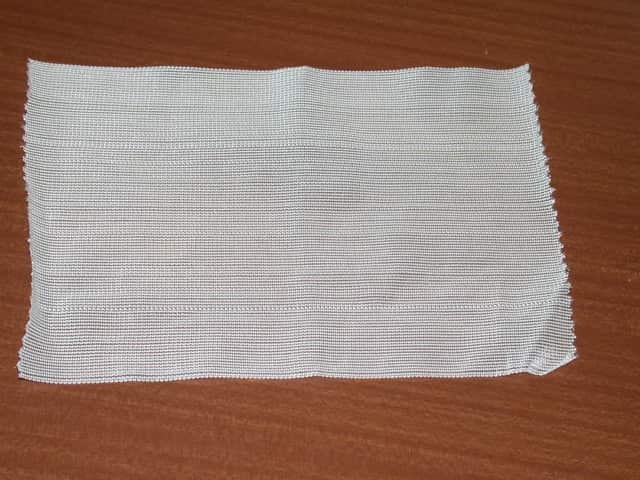
Silver-containg dressing
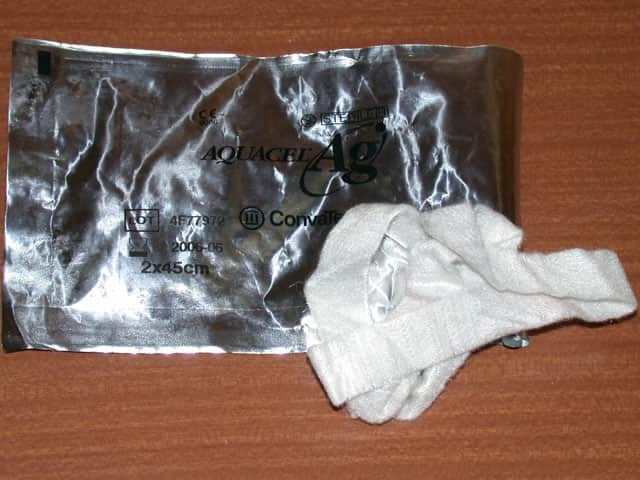
Silver-containg dressing
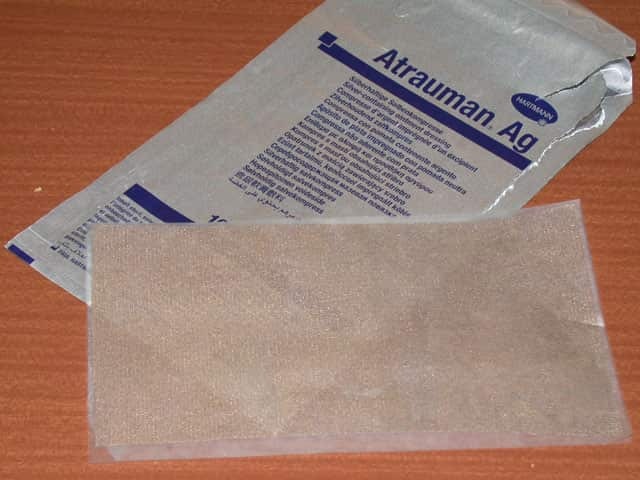
Silver-containg dressing
No single dressing is suitable for all types of wounds. Often a number of different types of dressings will be used during the healing process of a single wound. Dressings should perform one or more of the following functions:
Synthetic wound dressings can be broadly categorized into the following types.
Type |
Properties |
||
|---|---|---|---|
Passive products |
Traditional dressings that provide cover over the wound, eg gauze and tulle dressings |
||
Interactive products |
Polymeric films and forms which are mostly transparent, permeable to water vapour and oxygen, non-permeable to bacteria, eg hyaluronic acid, hydrogels, foam dressings |
||
Bioactive products |
Dressings which deliver substances active in wound healing, eg hydrocolloids, alginates, collagens, chitosan, keratin |
||
The following table describes some of the many different types of wound dressings and their main properties.
Dressing type |
Properties |
Image |
|||||||
|---|---|---|---|---|---|---|---|---|---|
Gauze |
|
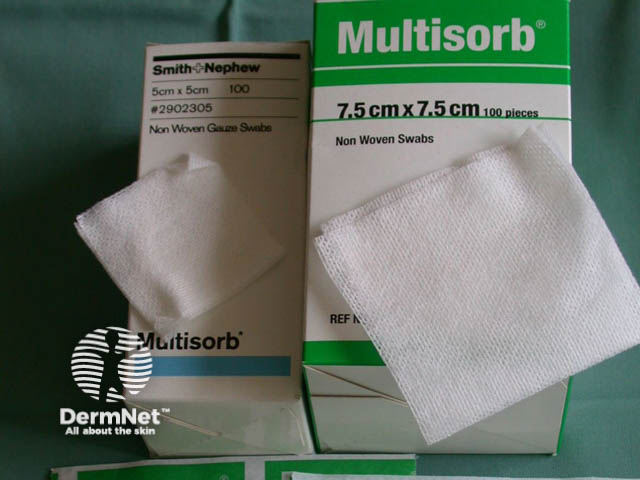
|
|||||||
Tulle |
|
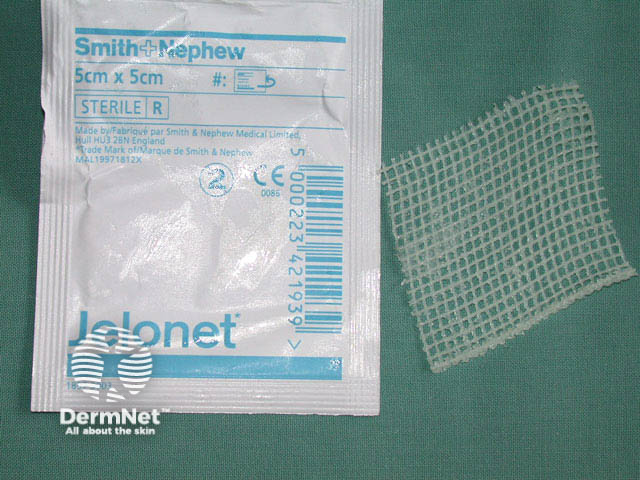
|
|||||||
Semipermeable film |
|

|
|||||||
Hydrocolloids |
|

|
|||||||
Hydrogels |
|
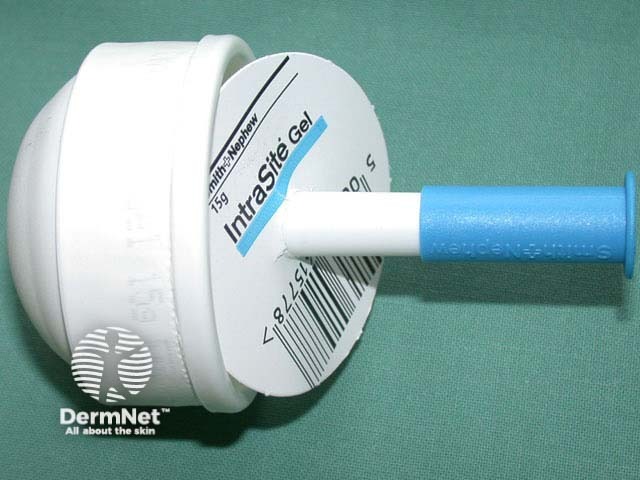
|
|||||||
Alginates |
|
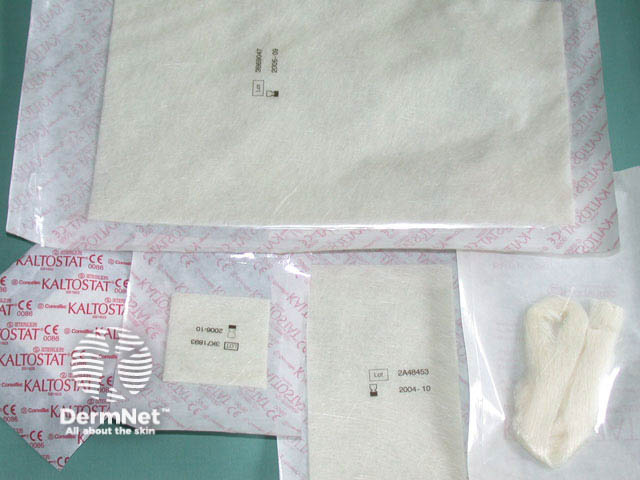
|
|||||||
Polyurethane or silicone foams |
|

|
|||||||
Hydrofibre |
|
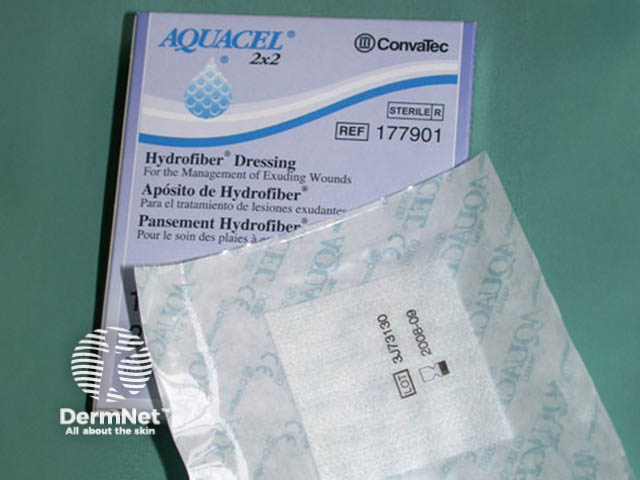
|
|||||||
Collagens |
|
||||||||
Different types of wounds and the different stages of a healing wound require different dressings or combinations of dressings. The following table shows suitable dressings for particular wound types.
Image |
Wound type |
Dressing type |
||||
|---|---|---|---|---|---|---|

|
Clean, medium-to-high exudate (epithelialising) |
|
||||
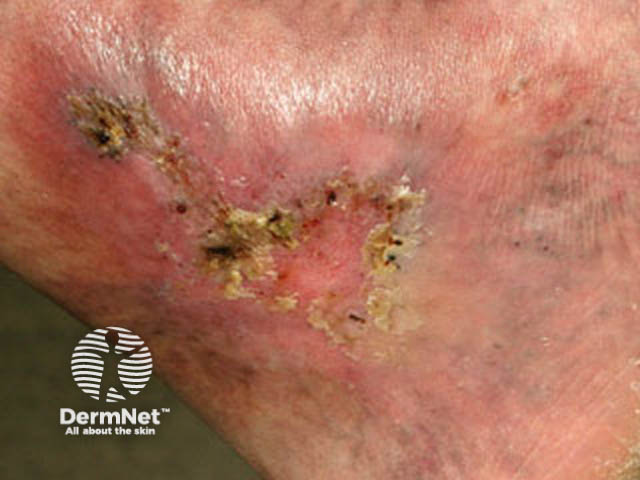
|
Clean, dry, low exudate (epithelialising) |
|
||||
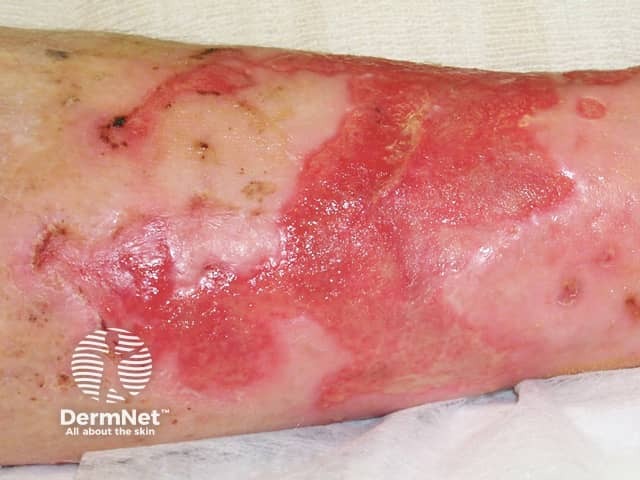
|
Clean, exudating (granulating) |
|
||||
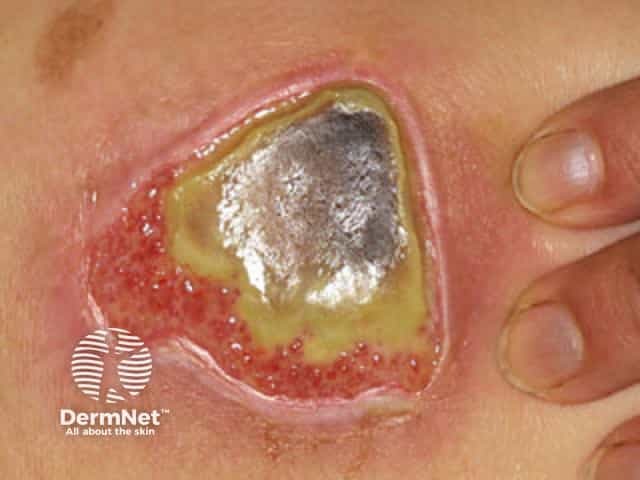
|
Slough-covered |
|
||||

|
Dry, necrotic |
|
||||
The dressings may require secondary dressings such as absorbent pad and bandages.
Wound dressings can cause problems, including: